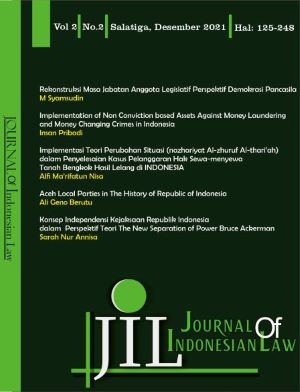PENETAPAN PERMOHONAN WALI ADHAL PERSPEKTIF IDEE DES RECHT GUSTAV RADBRUCH DI INDONESIA
DOI:
https://doi.org/10.18326/jil.v4i1.1002Keywords:
Wali Adhal, Putusan, Idee Des RechtAbstract
Guardians are among the pillars of marriage which must be fulfilled as regulated in Islamic law and legislation. However, there are guardians who are reluctant to marry that called Adhal. At the Sukoharjo Religious Court there was an applicant who raised this issue, but it was rejected, then the Petitioner took cassation and the Supreme Court of Cassation granted and canceled the decision of the Sukoharjo Religious Court. Focus of this research is comparing the two decisions and analyzing them using the theory of legal ideals (Idee Des Recht) which contains justice, certainty and expediency. This type of qualitative research uses a normative juridical approach with descriptive analysis results. Studies (Library Research) that use literature, books, journals, legislation and regulations, and copies of decisions as research objects. The results of this research show several differences in the legal considerations of the two decisions so the results of the two decisions are different. The Panel of Judges at the Sukoharjo Religious Court tried to lean towards expediency because it was oriented towards the continuity of the applicant's household but did not aim at certainty and justice in the idee des recht theory. The Panel of Cassation Judges stated that the court had made a mistake and was mistaken in applying the law based on Judex Factie and granted the petitioner's request so that no actions would occur that violated applicable norms. Thus, the Panel of Cassation Judges was closer to justice, expediency and legal certainty as in the idee des recht theory.








